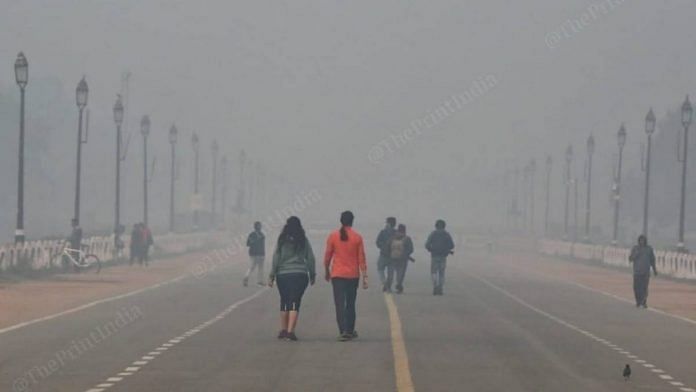New Delhi: Most state pollution boards have taken “minimal initiative” to be transparent with information they collect about environmental pollution and emission data, a study released by the Delhi-based think tank Centre for Science and Environment (CSE) has found.
The study, released Thursday, sought to assess how transparent State Pollution Control Boards (SPCBs) and Pollution Control Committees (PCCs) are with disclosing the information they collect under the Water Act, Air Act, and Environment (Protection) Act.
SPCBs and PCCs are the agencies in states and Union Territories that have been entrusted with the prevention and control of pollution.
“Barring a few boards which have taken steps to use their website and annual report for information sharing, majority of SPCBS/PCCs have made little effort to build a relationship with all stakeholders by sharing information,” says the study.
The study has an index, with states rated on the availability of information on their websites and annual reports.
The most transparent State Pollution Board are Odisha and Telangana — with a transparency of 67 per cent.
The top performers are Tamil Nadu (65.5 per cent), Madhya Pradesh (64 per cent), West Bengal (62 per cent), Goa (60.6 per cent), Karnataka (60.0 per cent), Haryana (59.9 per cent), Chhattisgarh (59.5 per cent) and Himachal Pradesh (59.5 per cent).
The worst performing states and Union territories were Nagaland (19.2 per cent), Chandigarh (15.8 per cent), Arunachal Pradesh (13 per cent) Manipur (12.6 per cent) and the Andaman and Nicobar Islands (5.5 per cent).
Also read: India’s poor face disproportionately higher risk of dying from air pollution than the rich — study
Performance parameters
Tasked with monitoring pollution levels, the SPCBs and PCCs serve as repositories of information that, the CSE says, should ideally be available to the public.
“The rationale of this report is to encourage public disclosure of information and to improve the quality of information shared by SPCBs/PCCs. In order to ensure more transparency in the working of a board, information disclosure has to be improved,” said the report.
The report assessed transparency by looking at two parameters from 2016 to 2021 — the availability and assessment of information on the SPCB/PCCs’ websites and annual reports.
Annual reports are statutory documents released in the public domain every year, detailing the SPCB/PCCs’ activities. Some of the information the websites are supposed to feature is related to board members, public hearings, laboratories, waste management, action plans for polluted rivers, and the availability of a Continuous Emission Monitoring System (CEMS), among others.
While 34 out of 35 SPCB/PCCs have a website, only Telangana, Tamil Nadu, West Bengal, Odisha and Kerala provide “significant amounts of information on their websites”, the study noted.
Despite a 2017 Supreme Court order requiring SPCB/PCCs to release real-time emission data, the study found that only “19 SPCBs/PCCs are displaying their CEMS data in the public domain — Andhra Pradesh, Assam, Bihar, Chhattisgarh, Delhi, Goa, Gujarat, Haryana, Himachal Pradesh, J&K, Jharkhand, Kerala, Madhya Pradesh, Meghalaya, Odisha, Puducherry, Punjab, Tamil Nadu and Telangana.”
On a positive note, nearly all SPCB/PCCs had an action plan for polluted rivers.
The annual reports of SPCBs/PCCs were sourced from their websites. According to the study, out of 34 SPCBs/PCCs that have websites, 11 had not uploaded their annual reports, while 23 had.
“However, it was interesting to find that six of them have uploaded annual reports that are 4-10 years old,” the study observed.
Only two states — Haryana and Karnataka — provided information on the compliance status of industries.
“One of the reasons for the lack of information could be that there is no definition of compliance,” the report said.
Significance and recommendations
The report concluded by calling upon SPCBs/PCCs to prepare themselves “for 21st century environmental governance” by working with all “stakeholders.”
The CSE report also urged the Central Pollution Control Board to fix a timeline by which all SPCBs and PCCs should upload their latest annual report “without delay”, and keep them on the website for at least 5 years.
It further recommended that the data should be “accessible to everyone”, and that all websites should have a uniform design so that navigation is easy and hassle-free with all the necessary information in their designated sections.
(Edited by Paramita Ghosh)
Also read: Air pollution from fossil fuels causes over 30% deaths in India every year: Harvard study



